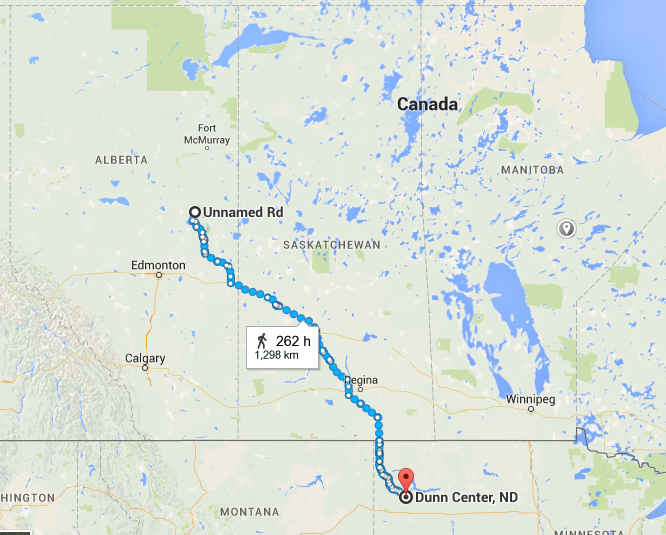Post Category : Heritage Management
What Makes a Site Significant?
During our field seasons we find 100+ archaeological sites every year; however, not every site we find is flagged for avoidance. The decision of whether a site is avoided or approved for impact ultimately comes down to the Historic Resource Management Branch at Alberta Culture and Tourism’s approval of our recommendations. Our recommendations are based on the following criteria of site significance:
Multiple Component: The continued use of a landform throughout time increases the site significance. This can be represented by stone artifacts from different, distinct depths or in different layers. The most obvious multi-component sites are historic period sites (Post-European Contact) with an earlier Pre-European contact component. For example, we have found stone tools in tests conducted around the outside of a collapsed cabins.

Integrity: Sometimes we assess areas after they have been disturbed. We do this either to assess the level of impacts from the disturbance or protect sites from any further impacts (site preparation for tree planting, gravel pits, etc.). If we believe the site has been completely disturbed and the artifacts have lost their context, we will collect a representative sample of artifacts and recommend approval for the impacted area.
Datable Materials: The presence of organic material is necessary to determine how old the site is. This is quite rare in the boreal forests of Alberta because the acidic soils do not preserve things such as bone or wood. Often, the only datable material we find is charcoal which can be used for Carbon dating. The ability to date the site is important as archaeologists are still figuring out the evolution of tool use and the spread of people throughout Alberta.
Exotic Materials: The sites we find are typically scatters of tool stone such as quartzite and chert. These materials were local to the area, collected from stream beds by the past flintknappers. When we find something not native to Alberta, we consider the site to be of high significance. The presence of obsidian suggests trade or travel from areas with volcanoes. The presence of Knife River Flint suggests trade or travel from North Dakota.


Presence of tools or diagnostic materials: The majority of sites we find are simply areas where a stone tool was made. To find a tool is significant because it tells us what activities were happening at the site. These tools can include things such as: scrapers for scraping hides; knives for butchering animals; wedges or adzes for woodworking; or projectile points (e.g. arrowheads) used for hunting. Projectile points can also be diagnostic of certain groups (e.g. Clovis) or certain time periods (e.g. spears>darts>arrowheads).

Distinct intra-site activity areas or features: Sometimes we can find things that suggest a certain activity happened at a specific area of a site. This can be represented by what we call features which are non-portable representations of human activity. These can be such things as: post holes, hearths, or walls. We can also find distinct activity areas such as the flake scatter identified at the Brazeau Reservoir.

Uniqueness of the site in the surrounding area: We often find ourselves in areas of the province that have never had an archaeological survey before. I’ve found sites in areas of the province that we would describe as “the middle of nowhere.” Basically areas that are from major rivers or known travel corridors that were used by people in the past. To find a small scatter of flakes in an area without another site for another 20 km in any direction is more significant than finding another site in densely occupied areas such as the Fort McMurray region.
Site size: Our work is primarily concerned with determining how large the site is for purposes of avoidance by our clients. When we find very large sites these are considered of high significance due to the increased potential of finding anything listed above.









